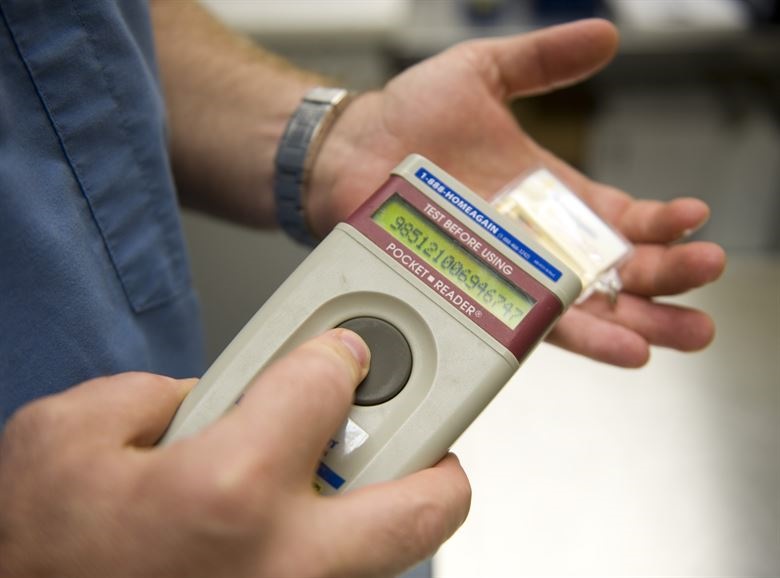To Chip or Not to Chip
Everything you need to know about microchipping your dog.
By Kelley O'Toole
November 6, 2019
Keeping your dog safe is Priority One for any owner. This extends beyond vaccinations and training. Making sure your dog is easily identifiable and returned to you quickly if lost is crucial. Dog tags are a tried and true method, but you might also consider a microchip.
What is microchipping?
A microchip is a tiny transponder or radio-frequency identification (RFID) chip that is implanted under your dog’s skin in the shoulder area using a needle-like injector. The procedure is done by your veterinarian and is a relatively quick and painless process.
If your pet is lost, he or she can be taken to a rescue shelter that will scan your pup for a microchip. If the chip is present, the ID number for the chip is displayed on the scanner, enabling the rescue shelter to look up your pet’s registration information and return him or her to you quickly.
The pros and cons of microchips for pets.
There are many advantages to embedding a microchip in your pet, including:
- Embedding is quick and painless
- Microchips, once embedded, can’t get lost
- Each microchip has a unique number – all you have to do is take the critical step of registering the chip placement
- Because microchip information is maintained in a national database, identification makes reunion possible, even if your pet has crossed state lines.
But of course, there are a few things to be aware of:
- While it’s rare, chips can travel from its original placement location – making it important the full length and width of the should area be scanned by a rescue shelter.
- Some microchips, like the Avid chip, can’t be detected unless an Avid scanner is used. Universal scanners are available and detect most current-technology chips. So whether your dog is being scanned by a rescue staff or veterinarian – they may need to be scanned multiple times or have a chip that goes undetected.
The lesson here is simple. Microchips do not – and should not – replace the need for pet ID tags. It only takes a second to become separated from your pooch – so always be sure he or she is wearing their collar complete with ID tags.
Registration is key
This may seem like it goes without saying, but just in case…
Embedding a microchip in your dog only works if you register the chip. It’s a fast, easy process that – with a small fee – ensures your pet’s personal information as well as your information are stored in the national database. This information typically consists of name, photo, rabies vaccination, chip ID number and contact information for you and your veterinarian. Once you’ve registered the chip, it’s a good idea to update it annually.
Learning more.
If you’re interested in having a microchip embedded in your dog, companies like Home Again and Avid can provide more details on the pros and cons, dos and don’ts. Likewise your veterinarian and trusted local kennel can also provide information. As always, you’re encouraged to contact or visit Aldens Kennels for all your dog questions.
